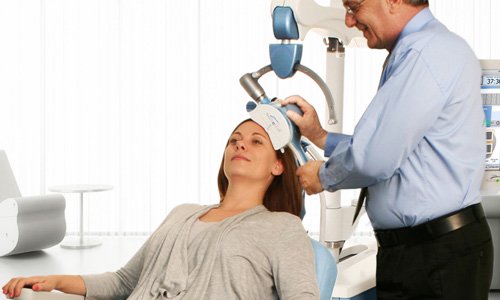Perhaps you’ve heard of this revolutionary treatment, or perhaps you are wondering what is TMS therapy and is it a reasonable option for you. Transcranial Magnetic Stimulation is a new solution to treat many different types of diseases and disorders. Dystonia, Parkinson’s disease, tinnitus, migraines, depression, strokes, and hallucinations are all on the list of viable conditions treatable through TMS therapy.
This is not an invasive therapy and has thus far shown some serious promise in treating the symptoms of the diseases and disorders listed. The brain responds to a stimulus that is designed to create activity within the neurons through the introduction of weak electrical currents. Not to be confused with electric shock therapy, this treatment offers only a very slight dose of electrical current. It’s really just enough to get the brain’s neurons to respond. Besides this therapy, you can also try Sonus Complete by consulting your doctor. You can also read Sonus complete reviews here.
Electromagnetic induction, which is fast and introduces changes within the structure of the magnetic fields, stimulates the brain’s response and therefore “kick starts” the responses that are similar to those found in brains of complete health.
This type of therapy can be used just once for the purposes of studying the reactions within a particular patient’s brain. However, for long term changes, repetitive treatments are necessary.
The introduction of such therapies is slow as there is enough public and medical disapproval of the past abuses associated with electric shock therapy, and by definition, they both sound rather similar. The massive difference between the patient’s point of view is comfort. The dose of electricity that is introduced is minute and causes “minimal discomfort.”
Many patients who have participated in small scale studies have felt no discomfort whatsoever. This differs from the electric shock therapy practices that surge the body with enough electricity to induce spastic muscle contractions. Single treatment patients tend to have less discomfort than those who undergo rTMS, or repetitive transcranial magnetic stimulation.
Hearing protection is recommended for anyone undergoing TMS therapy, as there is an associated risk of hearing impairment, especially with repeated therapies. The coil of the TMS unit clicks loudly enough to cause permanent or temporary hearing loss.
In some cases, although rare and considered especially severe, using the TMS system in conjunction with EEG electrodes has proven to cause heating on the scalp. In a few reported cases, this led to burns on the skin.
The FDA has submitted limited approval for the use of TMS therapy in patients with “treatment-resistant depression” as well as for clinical research and compulsory presurgical testing for patients with neurological or psychiatric disorders.





